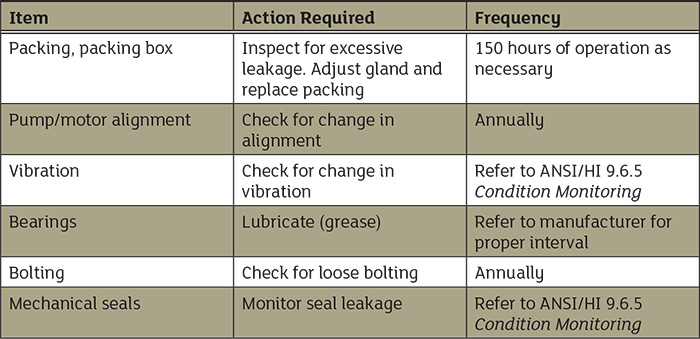What schedule should be followed for your pump system?
Hydraulic Institute
05/29/2018
Q. What items need to be included in regular pump maintenance, and what schedule should be followed?
A.Pumping systems can be complex, with many moving parts and subsystems that need to be regularly inspected and constantly maintained. Failure to frequently inspect pumping systems can lead to premature failure, losses in efficiency and increased operating costs. Therefore, it is recommended that a monitoring, maintenance and schedule be adopted, and it should include, at a minimum:- When applicable, gland packings must be adjusted to maintain concentric alignment of the gland follower, and maintain specified leakage so the packing and follower do not overheat.
- Check for any leaks from gaskets and seals. The correct functioning of the shaft seal must be checked regularly.
- Check bearing lubricant level, and verify if the hours run show a lubricant change is required.
- Check and verify that the duty condition is in the allowable operating region for the pump.
- Check vibration, noise level and surface temperature at the bearings to confirm satisfactory operation.
- Check that dirt and dust are removed from areas around close clearances, bearing housings and motors.
- Check coupling alignment and realign if necessary.
 Table 1. Items for regular pump maintenance (Images courtesy of Hydraulic Institute)
Table 1. Items for regular pump maintenance (Images courtesy of Hydraulic Institute) Table 2. Spare parts for pumping units
Table 2. Spare parts for pumping units
See other HI Pump FAQs articles here.

